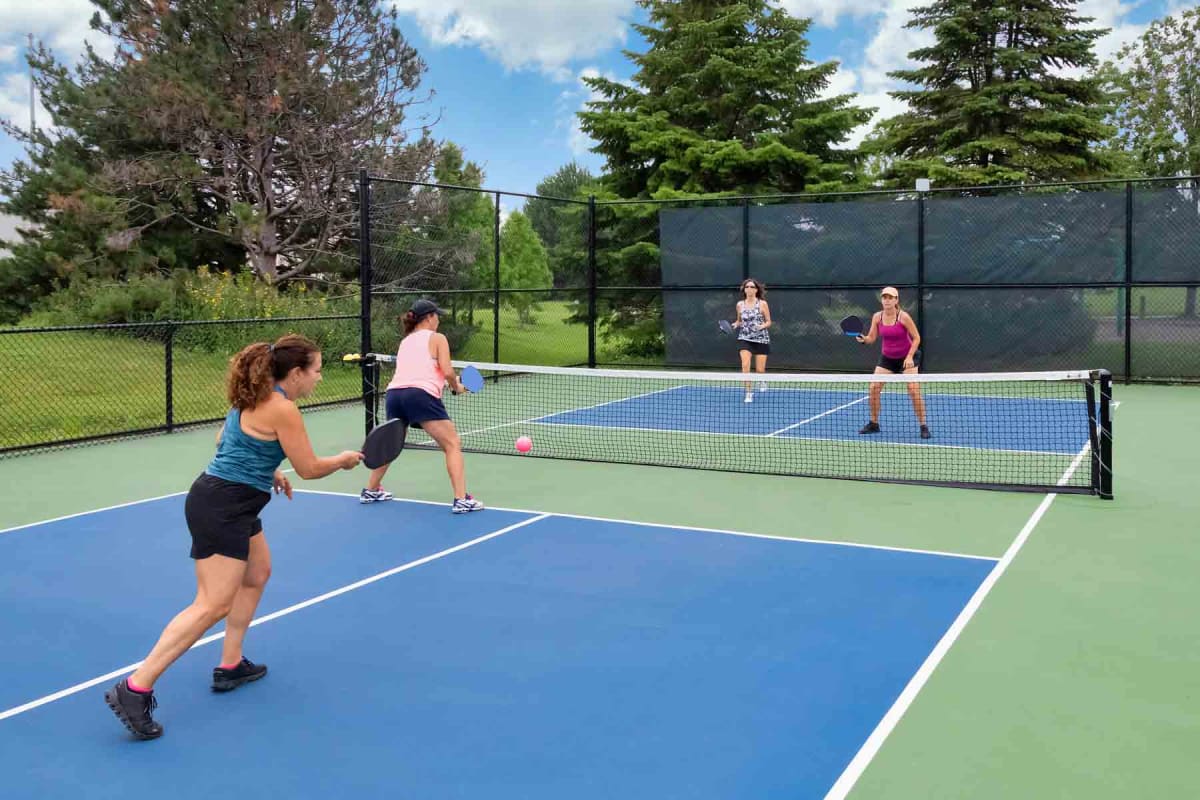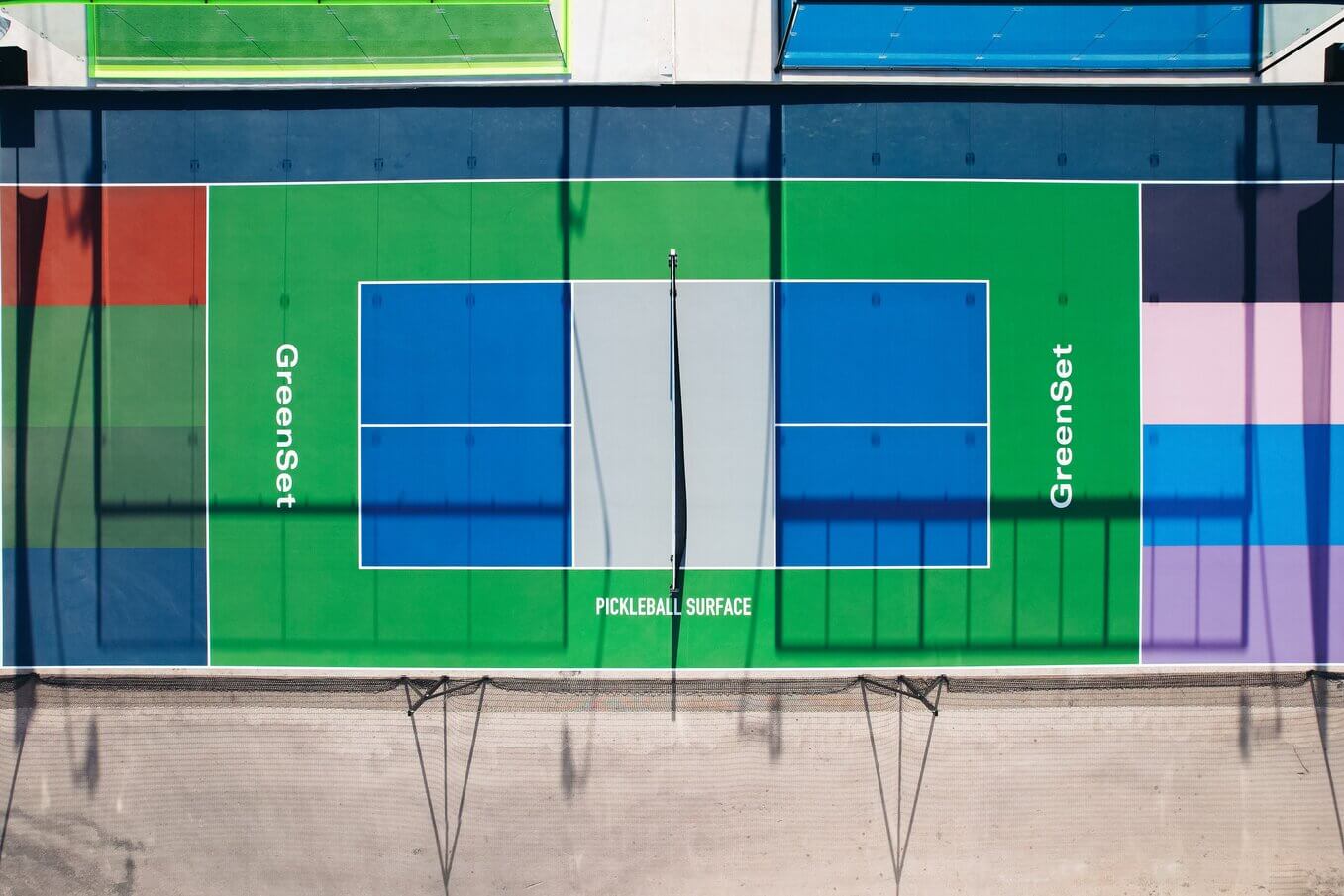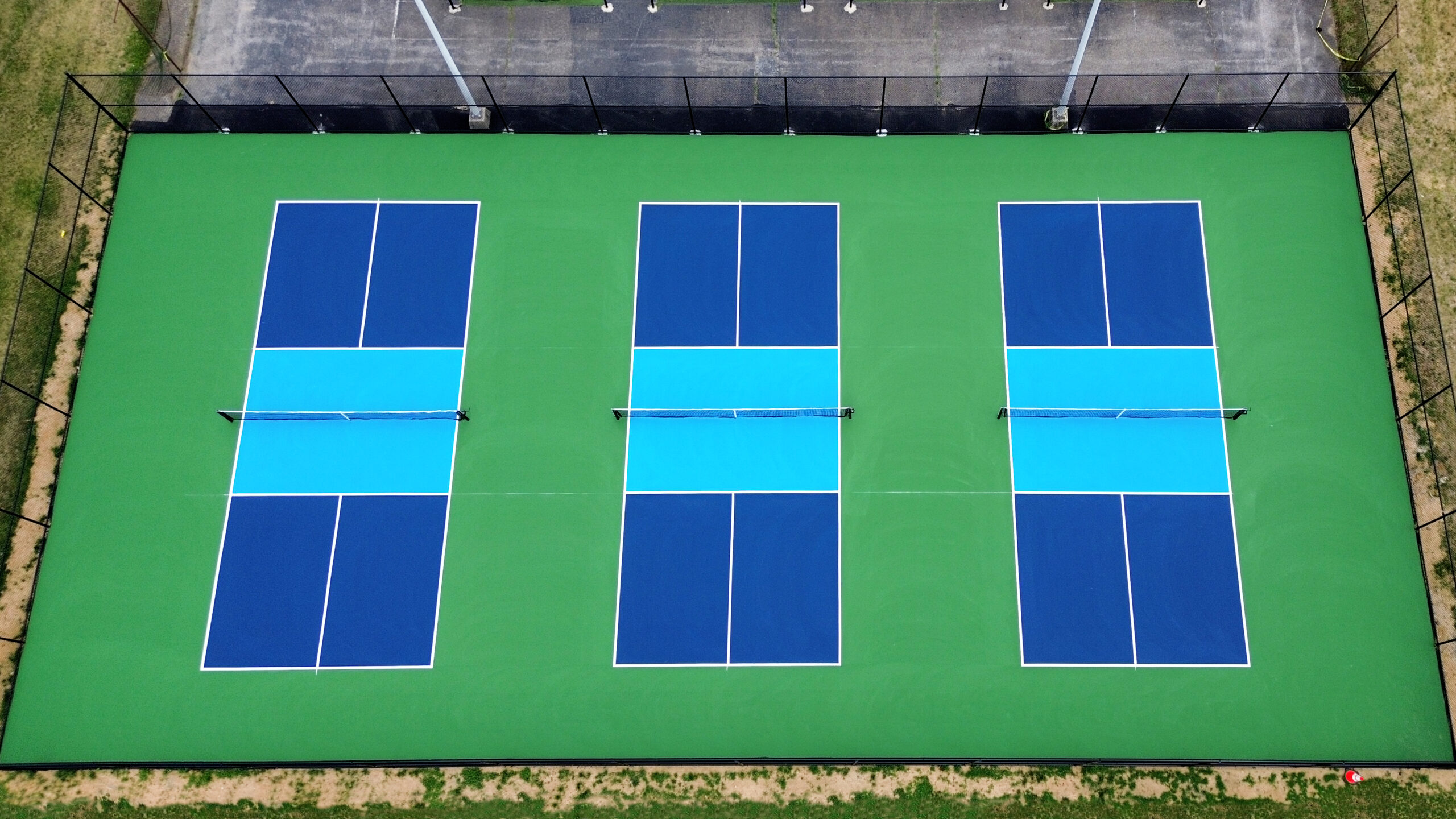Expert Pickleball Court Construction-- From Layout to Setup
Expert Pickleball Court Construction-- From Layout to Setup
Blog Article
Sustainable Practices in Pickleball Court Building You Must Know
As the appeal of pickleball remains to increase, so as well does the requirement for sustainable methods in court building. This technique not only addresses environmental issues but also enhances the longevity and performance of the courts. From choosing environment-friendly materials to executing efficient drainage and energy-saving illumination options, there are countless methods to think about. The impact of these techniques prolongs much beyond the court itself. Understanding just how each aspect contributes to an extra sustainable future welcomes even more exploration into the intricate equilibrium between entertainment growth and ecological stewardship.
Choosing Eco-Friendly Products
Picking eco-friendly materials is an essential action in the building of sustainable pickleball courts. The choice of lasting products not only reduces environmental impact however also enhances the longevity and performance of the court. Trick products consist of recycled rubber for the surface, which offers outstanding durability and shock absorption while diverting waste from garbage dumps.
Furthermore, using in your area sourced materials reduces transportation discharges and sustains local economic climates. Pickleball court construction. Using indigenous woods for fence and seating can give a lasting aesthetic while guaranteeing resilience versus the components.
Integrating permeable products for court foundations can even more add to sustainability by permitting all-natural water drainage and reducing drainage. These selections not just safeguard neighborhood ecological communities however additionally promote much healthier play settings.
Effective Water Drainage Solutions
While the selection of eco-friendly products is vital, implementing effective water drainage solutions is equally vital for preserving sustainable pickleball courts. Appropriate water drainage not just shields the court surface area from water damages but likewise reduces erosion and overflow, promoting environmental integrity.
Efficient water drainage systems can consist of absorptive paving, which permits water to penetrate the ground instead of pooling externally. This decreases the possibility of standing water, which can cause mold and mildew and various other maintenance problems. Furthermore, including tactically put drain channels and swales can direct excess water away from the court area, guaranteeing a completely dry having fun surface and stopping soil erosion.
Utilizing indigenous plant life in the landscape design around the courts can even more improve drainage by absorbing excess water and reducing overflow. These plants require less irrigation and advertise biodiversity, straightening with sustainable techniques.
In addition, it is crucial to frequently maintain the drain system to ensure its lasting effectiveness. This includes cleaning particles and surveillance for clogs. By focusing on effective drainage options, pickleball court contractors can significantly add to the sustainability and long life of the facility, eventually profiting both players and the atmosphere.
Energy-Efficient Lights Options
As the demand for pickleball continues to expand, incorporating energy-efficient lighting choices right into court style has actually ended up being increasingly essential for sustainability. Traditional lights systems typically take in too much power, adding to greater functional prices and ecological impact. Consequently, adopting modern, energy-efficient modern technologies is important for both new buildings and restorations.
LED (Light Emitting Diode) illumination stands apart as a premier selection due to its long life and power cost savings (Pickleball court construction). Compared to standard illumination, LEDs use approximately 75% much less energy and can last up to 25 times much longer, substantially minimizing maintenance prices. The directional nature of LED lighting decreases light contamination, making certain that lighting is focused on the court instead than surrounding areas.

Lasting Surface Area Alternatives
Discovering sustainable surface area choices for pickleball courts has gotten grip amongst home builders and gamers alike. The emphasis on environment-friendly products not only aligns with the growing environmental understanding yet also enhances the performance and toughness of the courts.
One preferred alternative is the use of recycled rubber, which can be sourced from utilized tires. This product gives excellent shock absorption, decreasing the danger of injuries for players while advertising sustainability. Furthermore, modular ceramic tiles made from recycled plastics use another viable alternative. These floor tiles check my source are very easy to replace and install, and their versatility enables numerous court setups.
Natural yard courts are likewise becoming a sustainable selection, promoting biodiversity and minimizing the heat island impact. They call for regular upkeep and water, which might not straighten with all sustainability goals.

Water Conservation Techniques

An additional efficient technique entails the setup of rainwater harvesting systems. These systems keep and collect rainwater for usage in preserving court surfaces and landscape design. This approach not only preserves drinkable water yet additionally minimizes reliance on local resources.
Furthermore, employing drought-resistant landscaping around the courts is essential. Native plants require much less water and are much better adjusted to regional climate conditions, therefore reducing total water usage. In addition, utilizing reliable watering systems, such as drip watering, guarantees that water is provided straight to plant origins, reducing evaporation index and waste.
Verdict
Incorporating lasting techniques in pickleball court construction substantially adds to ecological conservation and source performance. Utilizing environment-friendly materials, carrying out efficient drain options, and taking on energy-efficient illumination choices can considerably minimize environmental impact. Furthermore, exploring lasting surface area options and employing water preservation strategies improve the overall sustainability of these recreational centers - Pickleball court construction. By prioritizing these techniques, the construction of pickleball courts can line up with broader ecological objectives while advertising durability and capability within neighborhoods.
As the appeal of pickleball proceeds to rise, so too does the requirement for lasting techniques in court construction.Choosing environment-friendly products is an essential action in the building and construction of lasting pickleball courts. By focusing on energy-efficient lights options, pickleball court builders can add to a much more lasting future while satisfying the requirements of stakeholders and players alike.Integrating sustainable surface alternatives not just boosts the efficiency of pickleball courts yet likewise paves the way for executing effective water preservation strategies.Including sustainable methods in pickleball court construction significantly adds to ecological preservation and source performance.
Report this page